Medieval Art History (ARTH 4027) - FINAL - Professor Dr. Michael Anthony Fowler
1/19
Earn XP
Description and Tags
East Tennessee State University (ETSU), Fall 2025 Semester FINAL (Oct - Dec 11th) -/- Quizlet made by Keila Jordan, information gathered from the textbook of Marilyn Stokstad’s “Medieval Art” (2nd edition), Dr. Fowler’s class Powerpoint slides, and personal notes taken in-class. -/- I cannot confidently say that all the information is accurate, so if y’all fail the exam…my bad. At least, you can wish me luck on mine :P
Name | Mastery | Learn | Test | Matching | Spaced |
|---|
No study sessions yet.
20 Terms
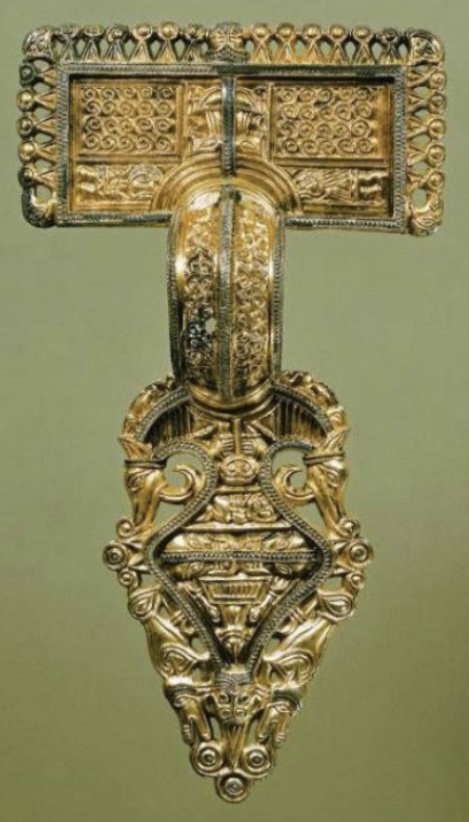
Gummersmark Brooch
Artist unknown, 6th century,
cast silver gilding
Scandinavian, German metalwork,
functional, but luxurious
Important display of wealth and identity
Chip-carving
prime example of Migration-Period “animal style” metalwork in Northern Europe (Scandinavia)
shows abstract, intertwined animals, highly symmetrical
used as a high-status personal ornament
reflecting Germanic traditions transformed after the fall of the Western Roman Empire
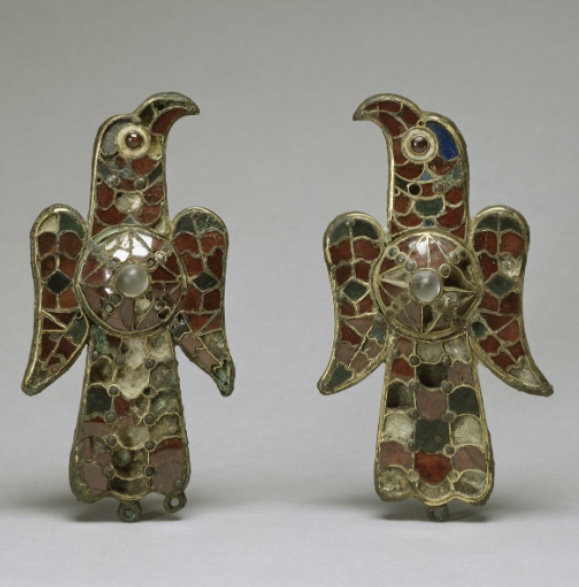
Eagle-shaped Fibulae
Artist unknown, 6th century,
gilt bronze, gemstones, glass, bone, pearl
Visigoth art
Germanic, migration period
Personal display of identity
“Animal style”
Pearl (?) in the bird’s chest
Bone around the iris of the eye
Linking European art to Scandinavian contexts
|
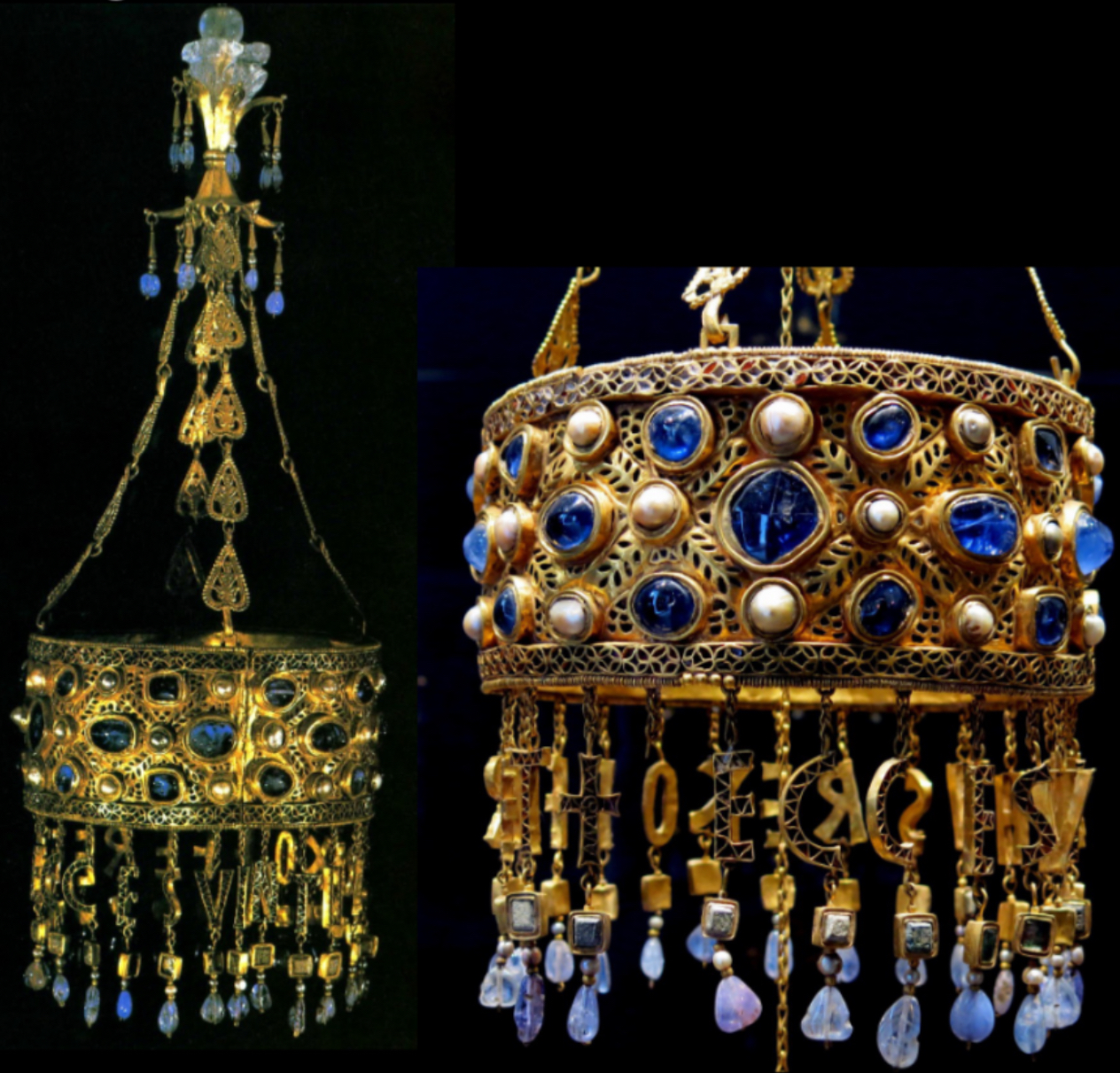
Votive Crown of King Recceswinth
Artist unknown, 653-672,
gold, rock crystal, pearls, sapphire, garnet
Sapphire is from Sri Lanka, which is very far away
Indicated the global scale of commercial trade
Visigoth Spain
The letters hanging, supposedly, the King’s name
Hang in a sanctuary, above the altar
Intertwines imperialism with Visigoth Spain
One of the few surviving Visigothic royal objects, originally a votive offering (not worn) by the Visigothic king
demonstrates the continuing Roman/Byzantine luxury tradition in Iberia under post-Roman rule, the role of the monarchy in religious offerings
interaction of Christian and barbarian forms in early medieval Spain
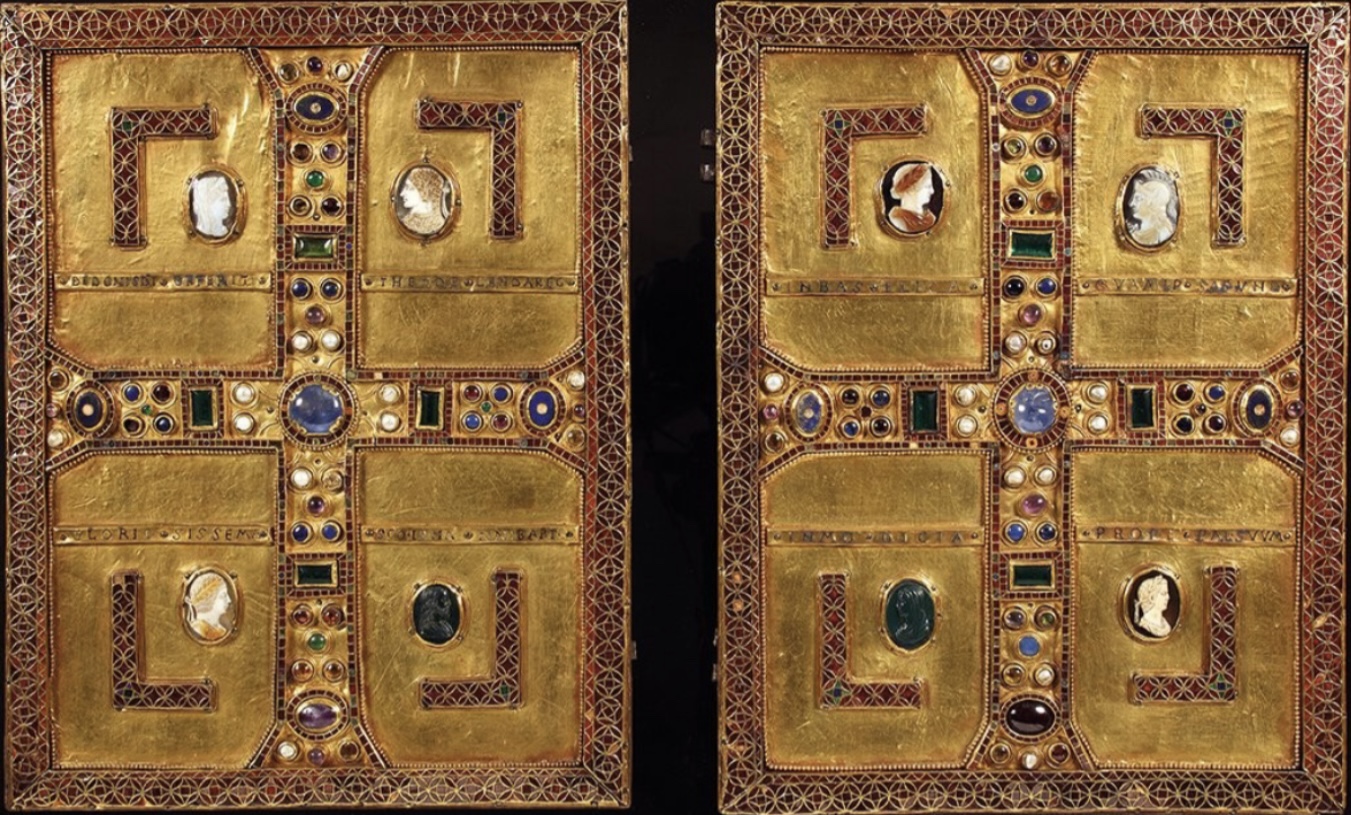
Covers of the Gospel of Theodelinda
Artist unknown, 6th-7th century,
gold, gems, pearls mounted on a wooden base
Cannot tell where the “cameos” came from
Antiques, Roman gems
Where the fuck did they come from? Idk
Germanic people traveled south, invaded Visigoth spaces
Associated with Queen Theodelinda
Pretty chill guy, let Celtic Monks do shit, more tolerant of different types of Christianity
#coexist
Lombard Italian art
Adaptation of Byzantine art
Meant to hold gospels, aka sacred texts
Hinges and clasps cause the text was PHAT as fuck
bridges the tradition of Late Antique book covers and early medieval illuminated manuscripts
illustrates how female royal patronage (Theodelinda) and conversion to Christianity among the Lombards expressed authority through sacred objects
showing continuity and change from Roman to early medieval kingdoms

Oratorio di Sta. Maria-in-Valle
Arist unknown, 8th century,
brick masonry, painted plaster, marble, stucco
For the patron, Duke Astolfo, this place served as a chapel for his ducal residence
Dedicated to Saint Maria
Modernly called “The Little Temple”
The roof is taller than the aps
Nave uses groin vaults,
Barrel vaulted arches
Shows how Christian architectural forms adapted to local traditions
Lombard Italy
The Palatine Chapel, intended for people in the palace
High-relief stucco
Used carving tools, variation in the work = not a stamp
The forms are similar to the Byzantine style, cause they’re long and skinny like Kendall Jenner
Roman-inspired architecture with Byzantine-inspired artwork
in northeastern Italy, it represents the fusion of Byzantine and Lombard architectural/mosaic traditions
preserved mosaics and structure show how early medieval Christian architecture adapted classical models in a regional milieu
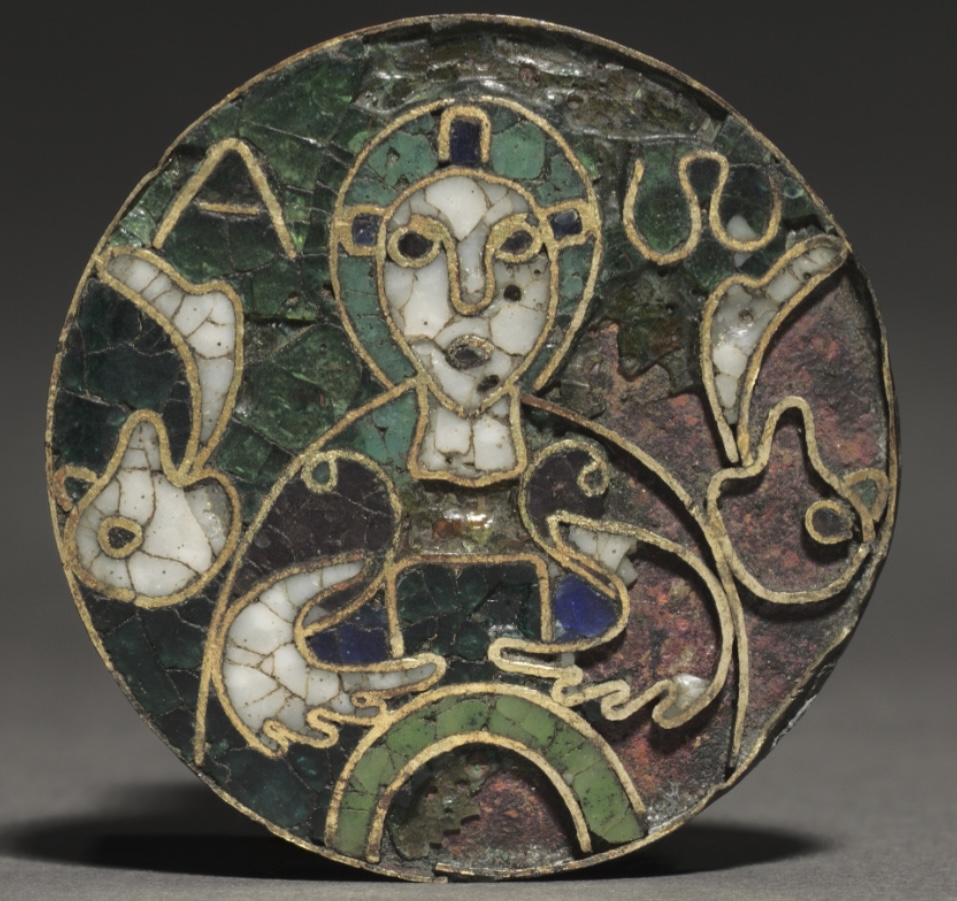
Medallion with Bust of Christ
Artist unknown, 8th century,
cloisonne enamel on copper
We see an abstracted Christ
There's a halo
The Greek alpha and omega symbols
The beginning & the end
Don't forget to take ur “heat-blockers”
Frankish
Cloisonne = bounded spaces created by a flattened wire
Polychrome style
The style of the birds, “animal-style,” is different in colors
small-scale devotional piece
shows the Christianization of elite objects in the early medieval era
continuation of late-antique portrait conventions (Christ as Pantokrator) in portable form
use of image as devotional/imperial symbol in the early medieval West
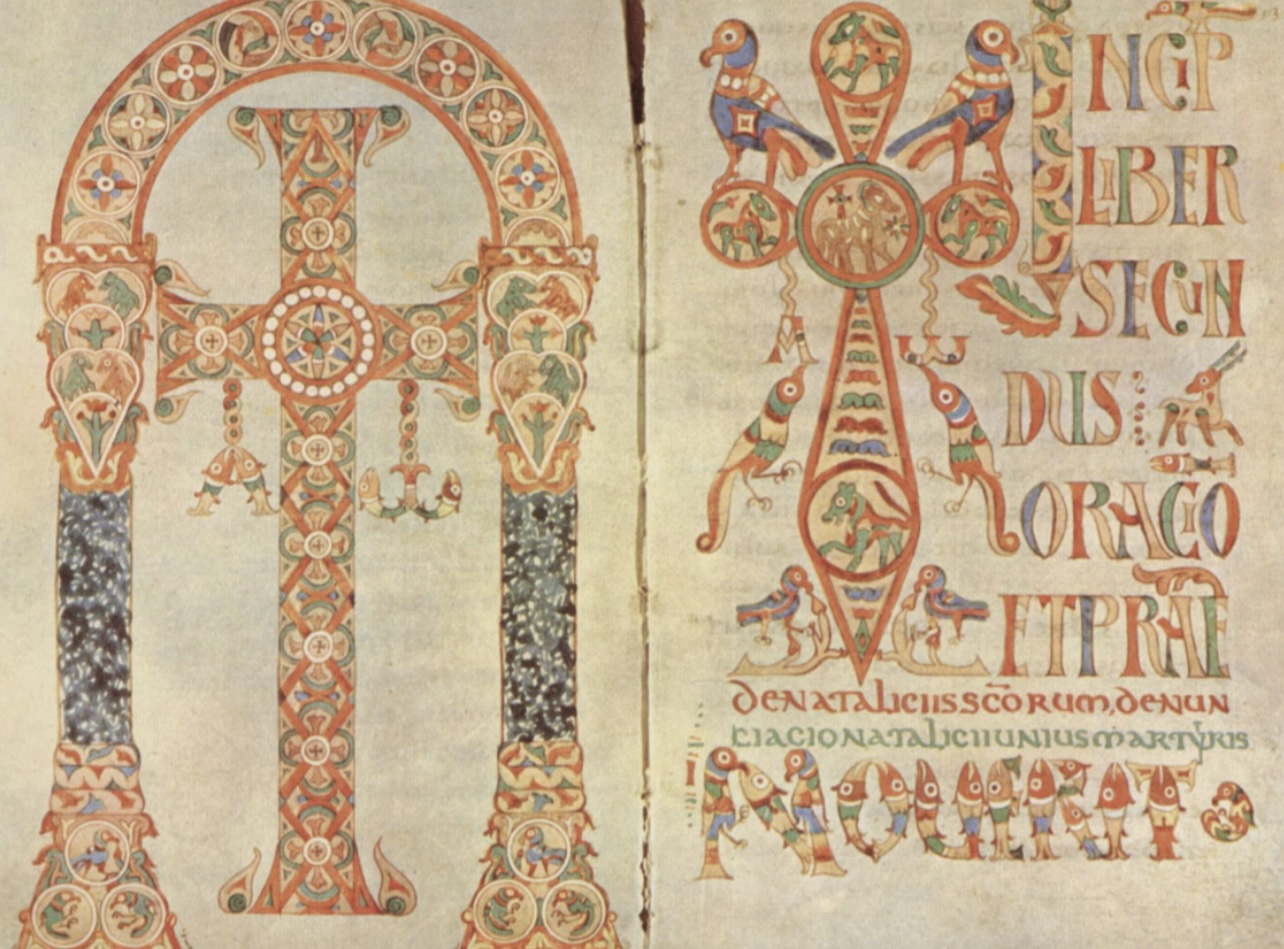
Sacramentary of Gelasius
Artist unknown, 8th century,
ink and color on parchment
Very luxurious, ornamental
Book production by hand, manual copying
Beautiful writing
Frankish
Fish = Christian symbol
Shapes of fish replicate the alpha and omega symbol = double Christian
All the circles were made with a compass
Typography resembles jewelry
Merovingian eye
The eyes of the animals are perfectly centered on their heads
earliest surviving liturgical books in the Latin West
shows the development of Christian ritual book design after the fall of Rome
shows the centrality of liturgy in early medieval ecclesiastical culture
illustrates manuscript production and the role of scriptoria
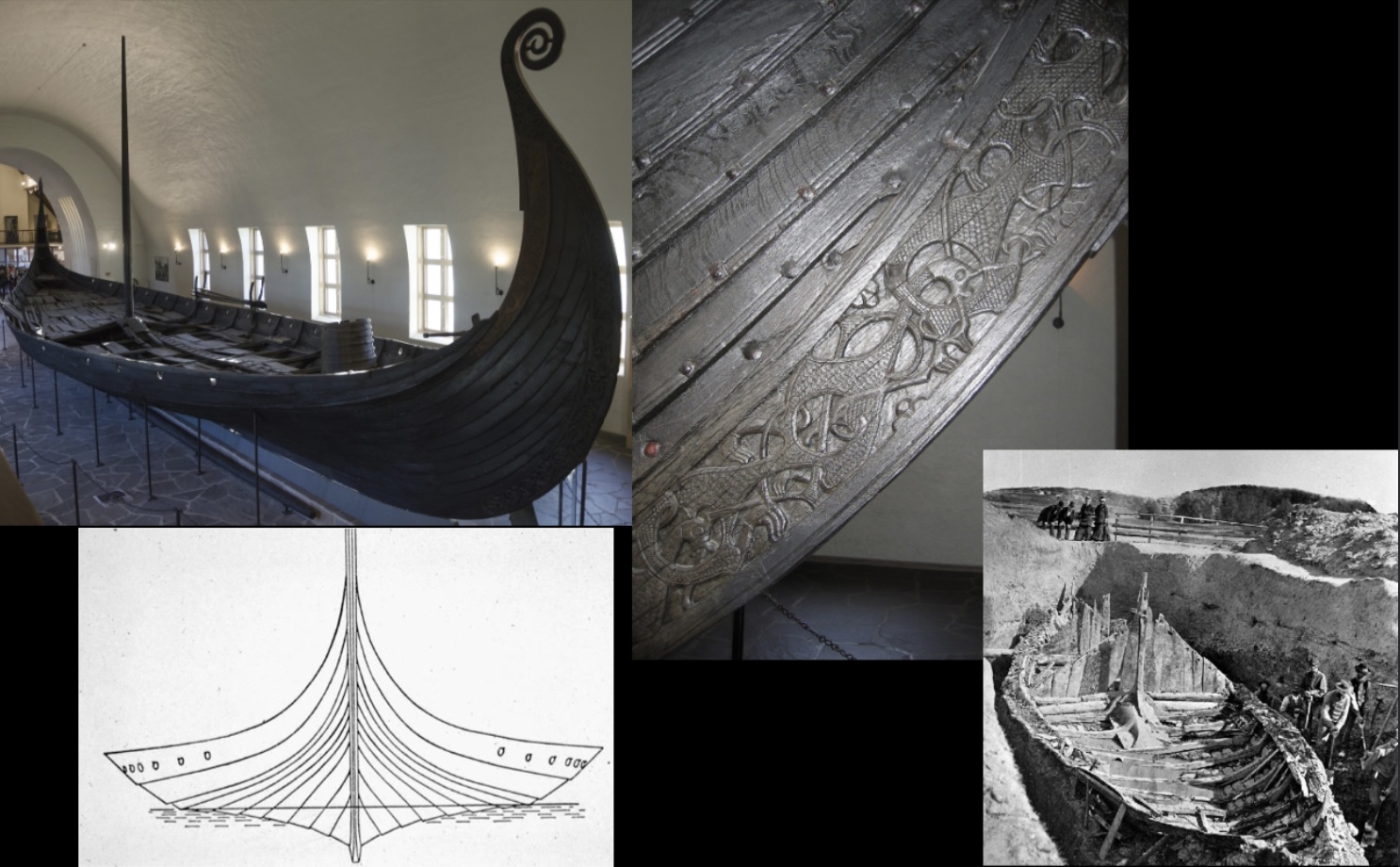
Oseberg Karve (Ship)
Artist unknown, 800-820,
oak and iron
Clinker-built construction
Viking is an OCCUPATION, does not equal race, gender, or ethnicity
The boat is PHAT and shallow
For short little trips
If there was water, there were Vikings
Best preserved boats
Found in a tomb, buried with two female bodies
Shell-first technique
outside/shell built first
The relief artwork, dragon/serpent artwork, the artwork is meant to imply that the boat itself was a serpent of its own
30 holes for holes, at least 30 people on the boat
Mass for a sail
To get air AND row
This was probably their Amazon boat, shipping everything
later than some early medieval works, significant for showing the maritime power, status, and artistic sophistication of Viking elites
the decoration also draws on Insular/interlace and animal‐style motifs
illustrating cultural connections across Northern Europe
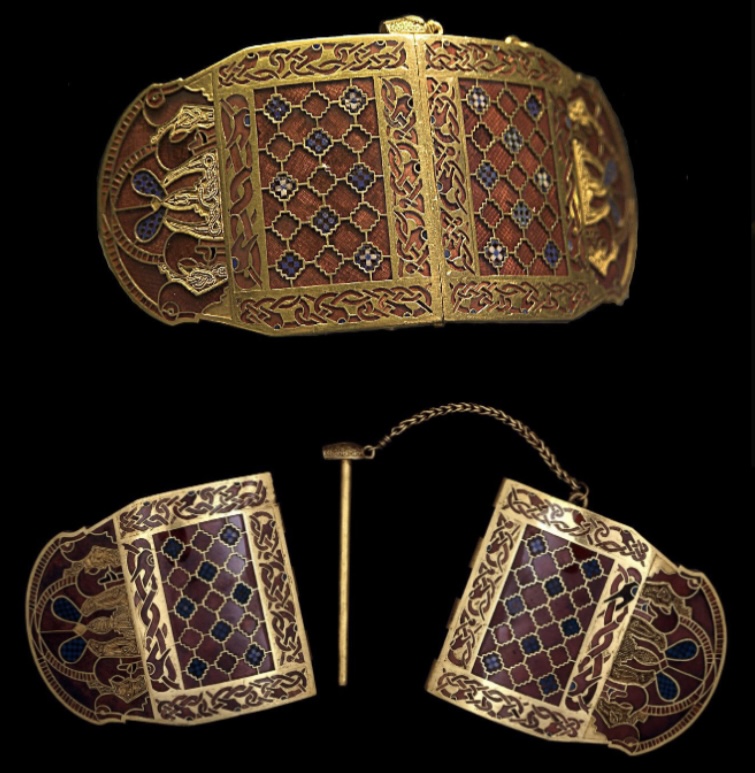
Shoulder Clasp
Artist unknown, 625
Gold, garnet inlay, colored glass
Object found in the tomb/excavation of a princely burial mound
Cemetery at Sutton Hoo
Imitates the Roman dress armor found on the shoulders of emperors
Similar to the relief artwork on coins
Set in gold wire cloisonne, the backing is copper
Byzantine-style
major example of Anglo-Saxon elite metalwork
demonstrating the richness of early medieval craft, the interplay of pagan and Christian symbolism
adaptation of Roman and Scythian styles in a northern European context
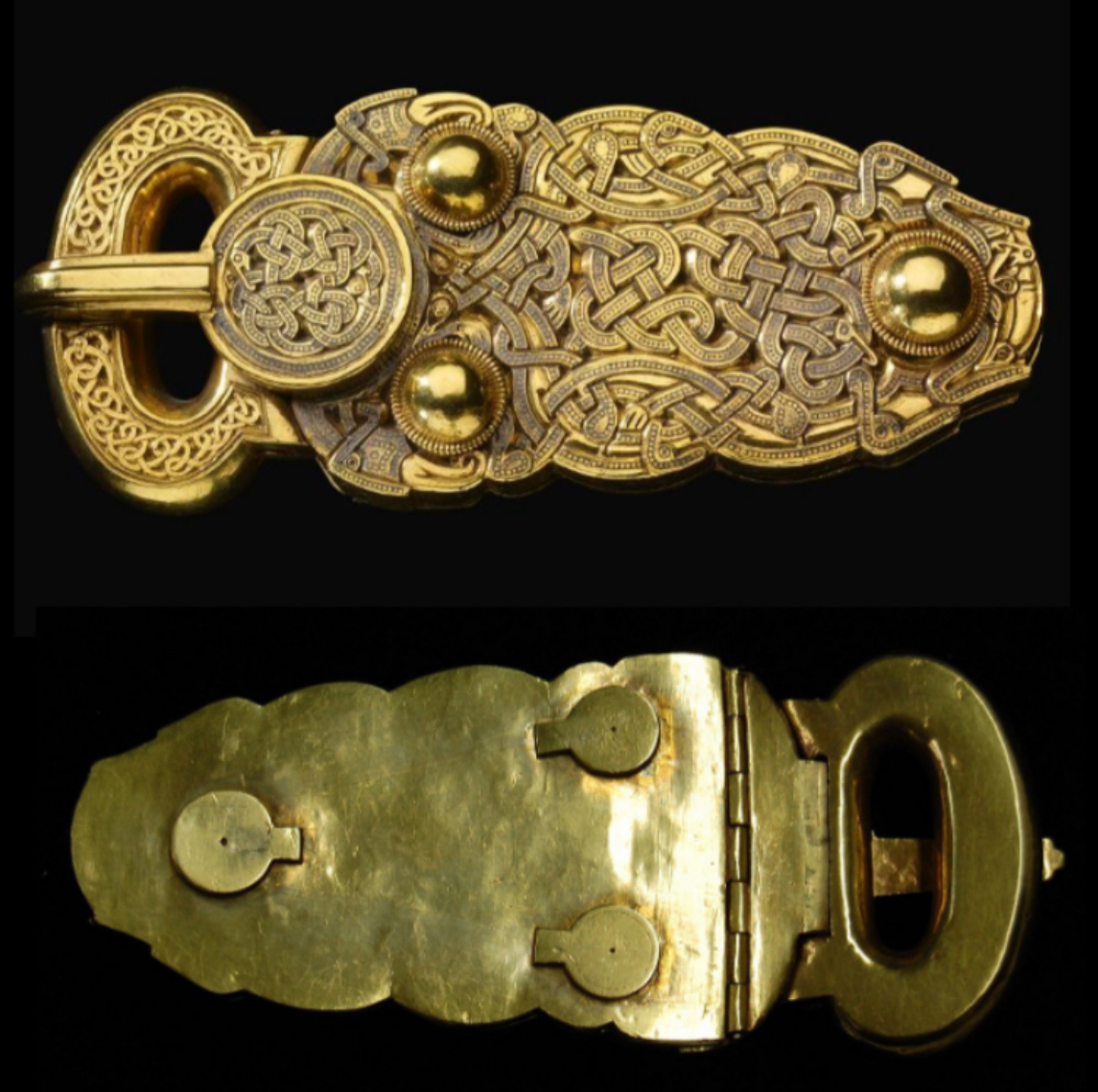
Belt Buckle
Artist unknown, 625,
Gold and niello
Also from the Sutton Hoo, Burial Mound
“Animal-style” = scandinavian
Can date a bronze based on the copper-tin alloy
Pure gold is very soft
Similar significance to the shoulder clasp
symbol of status, wealth, warrior-aristocratic identity
fusion of continental and insular forms in early medieval Britain
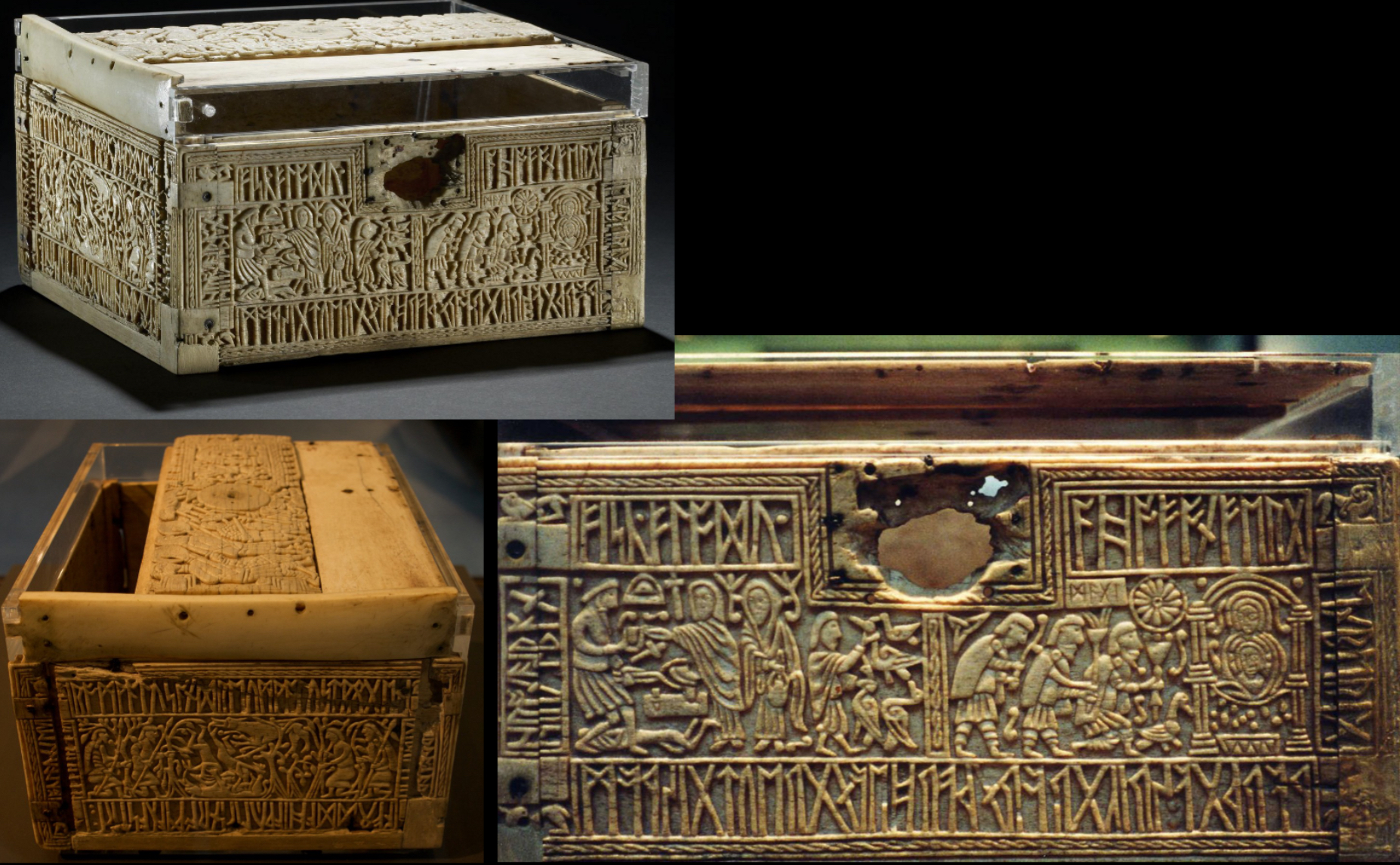
Franks Casket
Artist unknown, 700,
Whale bone, metal fittings, and hardware
Made of WHALE BONE
Assembled with hinges
“Franks” casket
Nothing to do with the Franks, just the name of the collector
Maintaining Norse/Germanic imagery & Christian tradition
Figures are hella abstracted
No distinction is being made in garments
Very flat, non-representational
Writing: Runes
Script meant to represent phonetic values
Old Germanic language
With riddles !!! about how the bone was acquired
Scenes of Roman myth & history
combines Christian, Roman, and Germanic iconography with runic inscriptionsA
key example of Anglo‐Saxon integration of multiple traditions and the complex identity of early medieval England
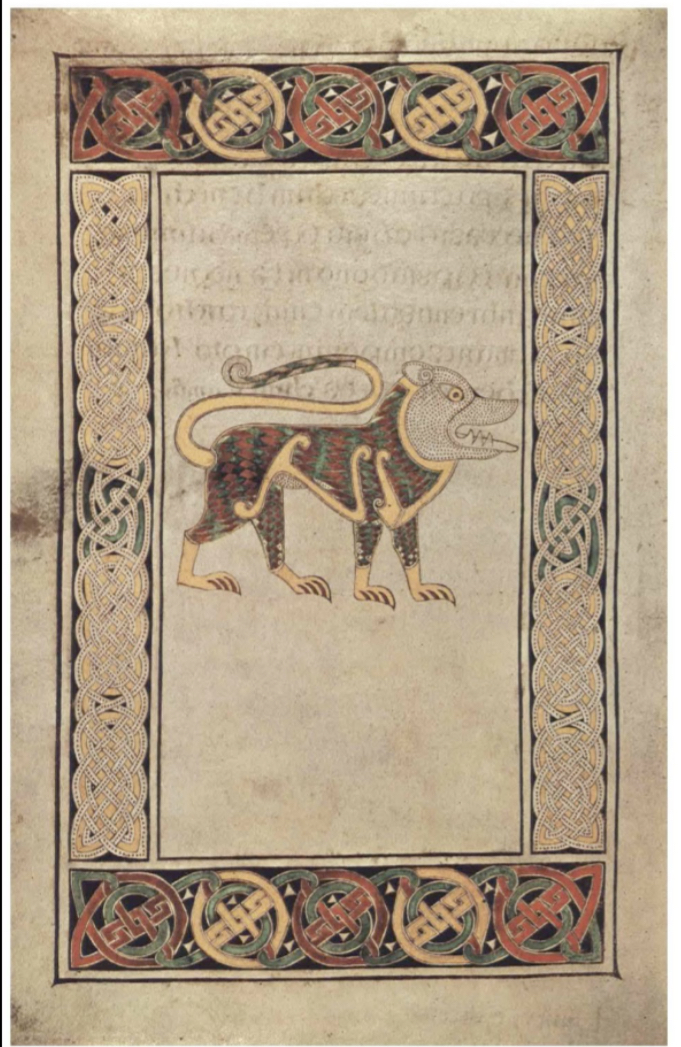
Lion of John, from the Book of Durrow
Artist unknown, 7th century,
Ink and colors on vellum
Knowork
Long-standing celtic
Highly symmetrical
The landing page starts the book of John
Christian artwork
Looking at a style translates across work
Far cry from art in an English/Christian context
Installed in a churchyard
part of the insular Gospel-book tradition: each Evangelist had a symbol (Matthew-man/angel, Mark-lion, Luke-ox, John-eagle)
demonstrating the merging of Celtic, Pictish, and Christian artistic traditions
animal-ornament typical of Insular style
shows the role of manuscripts in monastic centers of early medieval Britain and Ireland
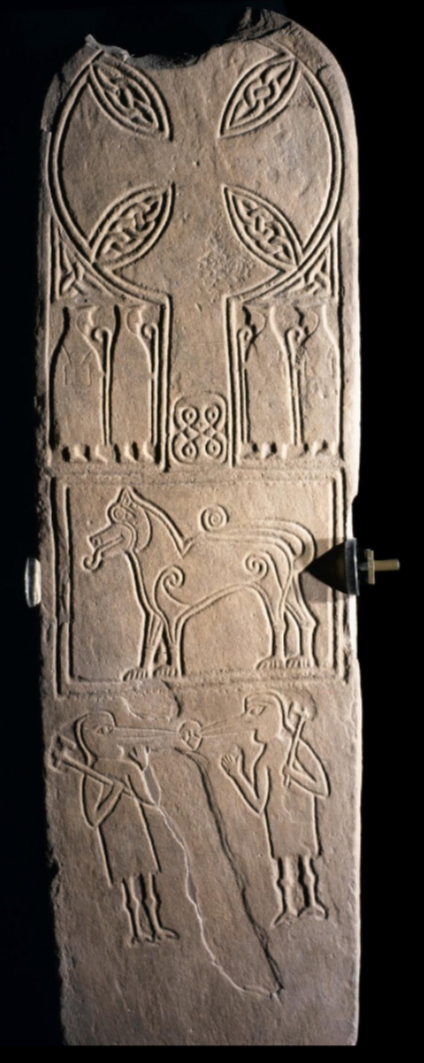
Papil Stone
Artist unknown, 7th or 8th century,
Fine-grained red sandstone
Similar approach of the lions to the previous, Lion of John
Curved outlines
Curled tongue
Abstracted
An example of Pictish monumental stone carving
combining a Christian cross and native Pictish symbols
illustrates how Christian iconography was adopted into local elite commemorative practices in early medieval northern Britain
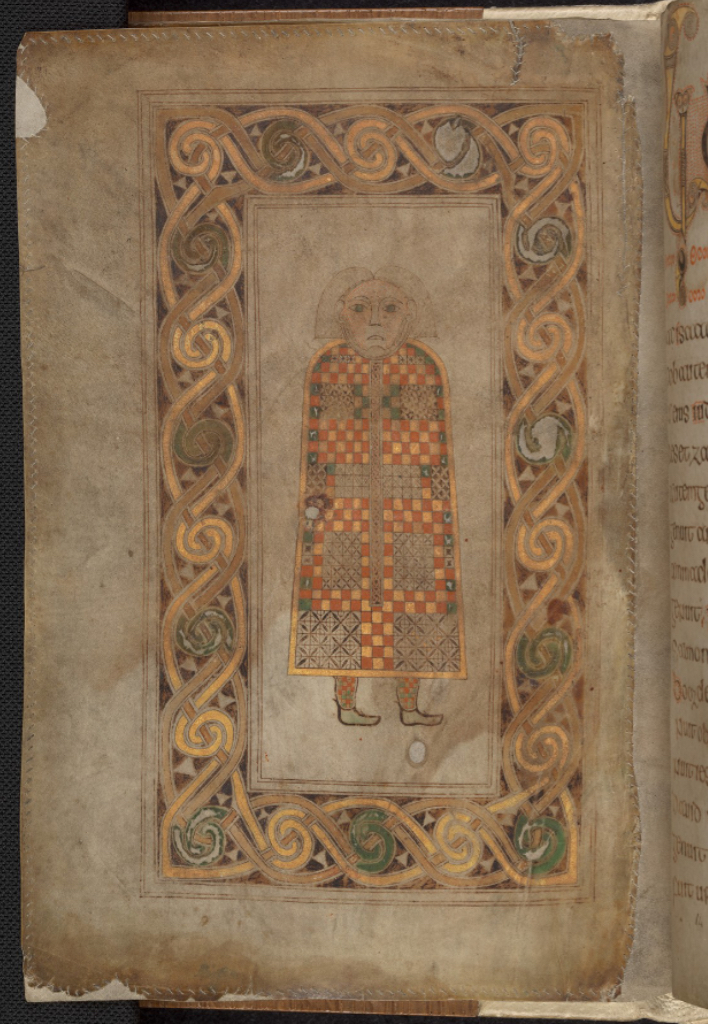
St. Matthew, from the Lindisfarne Gospels
Artist unknown, 7th century,
Ink and colors on vellum
Multiple hands/artists worked on this
Feet in lateral perspective, head in front perspective
Patterns imitate jewelry of the time
Red lead
Roasting white lead (very toxic)
Found locally
Checkerboard/cloisonne patterns
Flattened surface
Dealing with a part of the world that is cut off
Part of trading networks
How they got other pigments NOT readily available
exemplifies the height of Insular manuscript illumination
The fusion of Mediterranean (late Roman/Byzantine) book art with Celtic and Anglo-Saxon decoration
richly decorated evangelist portraits and carpet pages
shows the vitality of monastic culture in early medieval Britain and its role in manuscript production and transmission of the Gospels
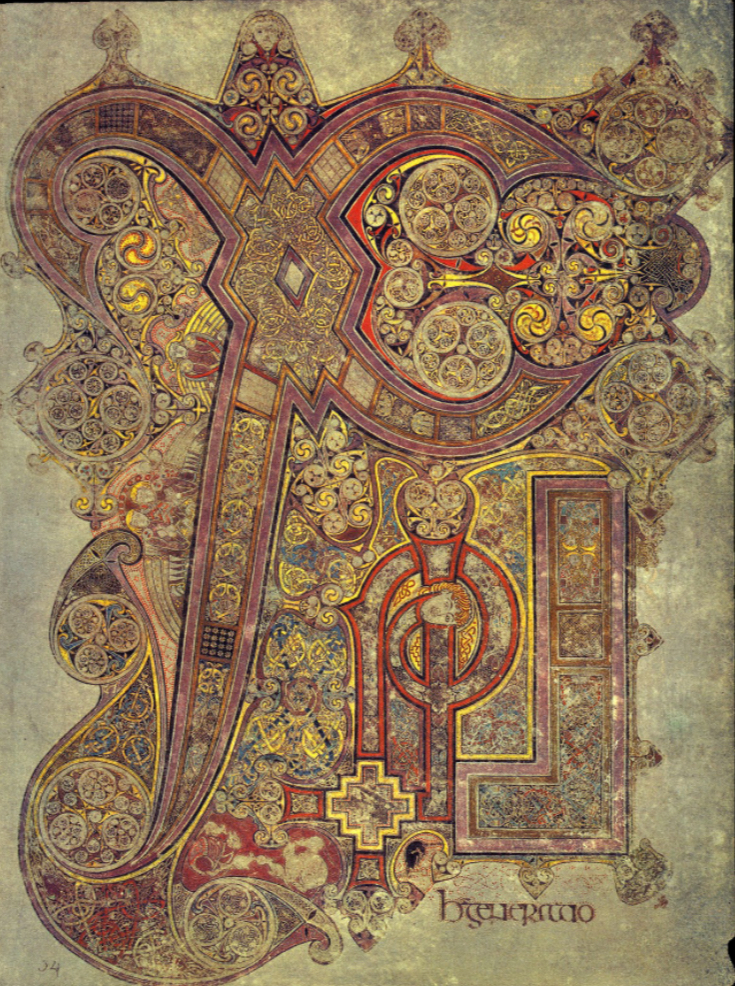
Monogram of Christ, from The Book of Kells
Artist unknown, 8th to 9th century,
Ink and colors on vellum
“Carpet page”
Distinct of Hiberno-Saxon artwork
Long tradition of Celtic art
Little easter eggs everywhere
Callographic treatment of the text
This shit probably took MONTHS of meticulous work
From the Book of Kells
Most famous of carpet pages
Book production was stopped due to a Viking attack
Taken to Kells, completed by 4 other artists
“The birth of Christ happened this way.”
The Chi-Rho page is one of the most famous pages of Insular art
dramatically enlarges the monogram for Christ at the beginning of the Gospel of Matthew
filling the page with interlaced knots, zoomorphic and anthropomorphic forms, and vibrant color
embodies the exuberance of Insular illumination and the merging of Christian motifs, Celtic decorative traditions, and monastic book culture
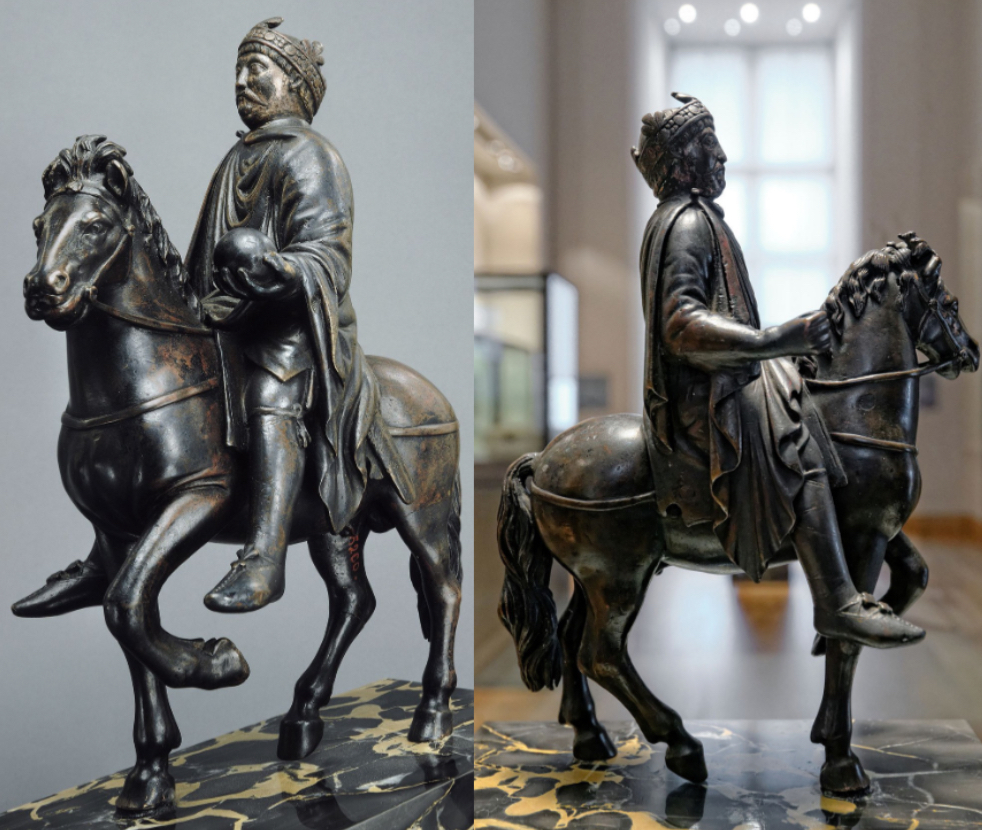
Equestrian Portrait of a Carolingian King
Artist unknown, 9th century,
bronze
Conscious quotation of Carolingian imperial art
Restoring/reviving the Roman Empire
Man on a horse
Suggested movement of the horse
Tilted head, lifted leg
Horses are not cheap animals
Laws on who can ride
Symbol of wealth, power, authority
Man with crown & medals, protective gloves, and riding boots
Holding an orb
Symbol of imperium (orb = globe)
Has the luxurious, pointed mustache
Frankish rank of authority
Pony is tiny asf
Horses are powerful…don’t want their size to overtake and diminish the presence of the rider
Revives the Roman imperial equestrian tradition to assert Carolingian imperial authority
Manifests the Carolingian attempt to link the Frankish ruler to the legacy of Rome
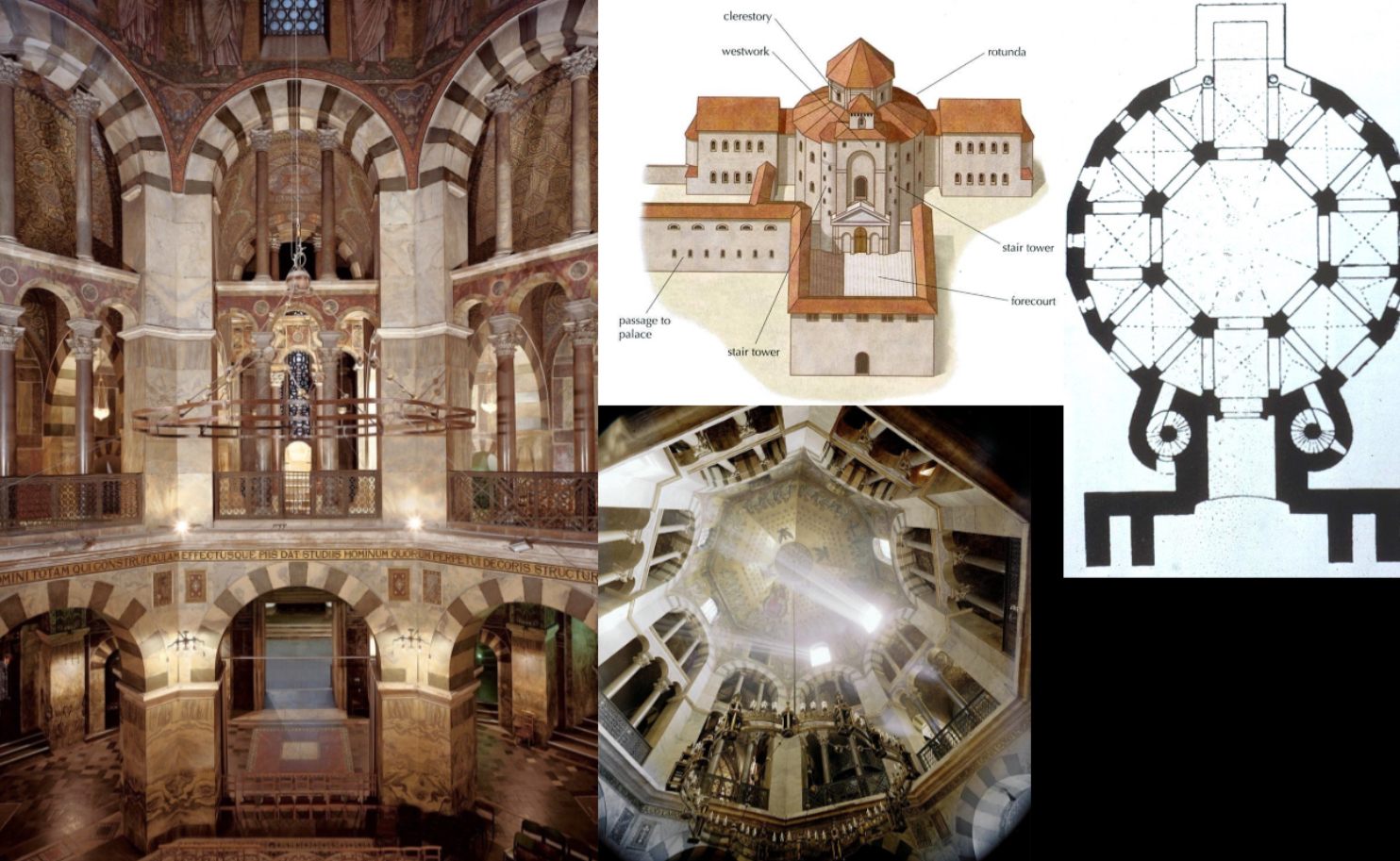
Palace Chapel of Charlemagne
Odo of Metz, 792-805,
Stone, marble, and mosaic
The only surviving part of Charlemagne’s capital in Aachen
3 functions
Palace-church
Martyrium for Charlemagne’s collection of relics
His tomb
Centrally planned building
Lots of columns
Corinthian, Roman-style
Emphasis on verticality
Unlike the Byzantine, this is more symmetrical
Hallmark of Carolingian architecture
palace of Charlemagne (at Aachen)
fuses Classical, Byzantine, and Western elements to create a central-plan imperial Christian space
becomes a model of Carolingian architecture
shows the revival of imperial symbolism and Christian ritual centrality
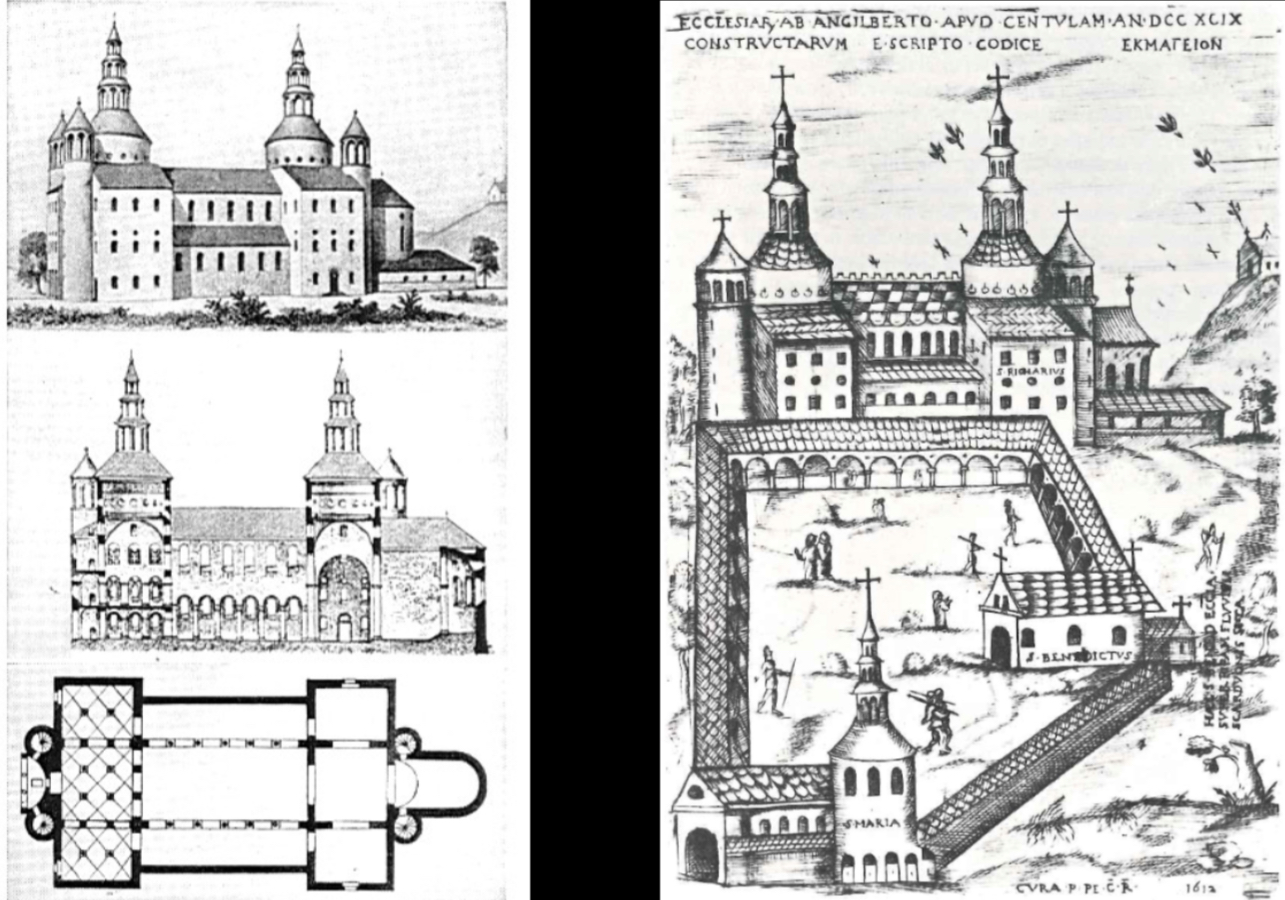
Abbey Church of St. Riquier, Monastery of Centula, France
Artist unknown, dedicated 799
Basilican tradition of architecture
Dedicated before Charlamagne was crowned emperor
Suffered damage from FUCKING VIKINGS
Intersections topped with towers
Prominent church/landmark within the surrounding community
Demonstrates Carolingian architectural innovation rather than slavish imitation of Roman models
shows the ambitious nature of monastic building and the importance of monasteries in Carolingian culture
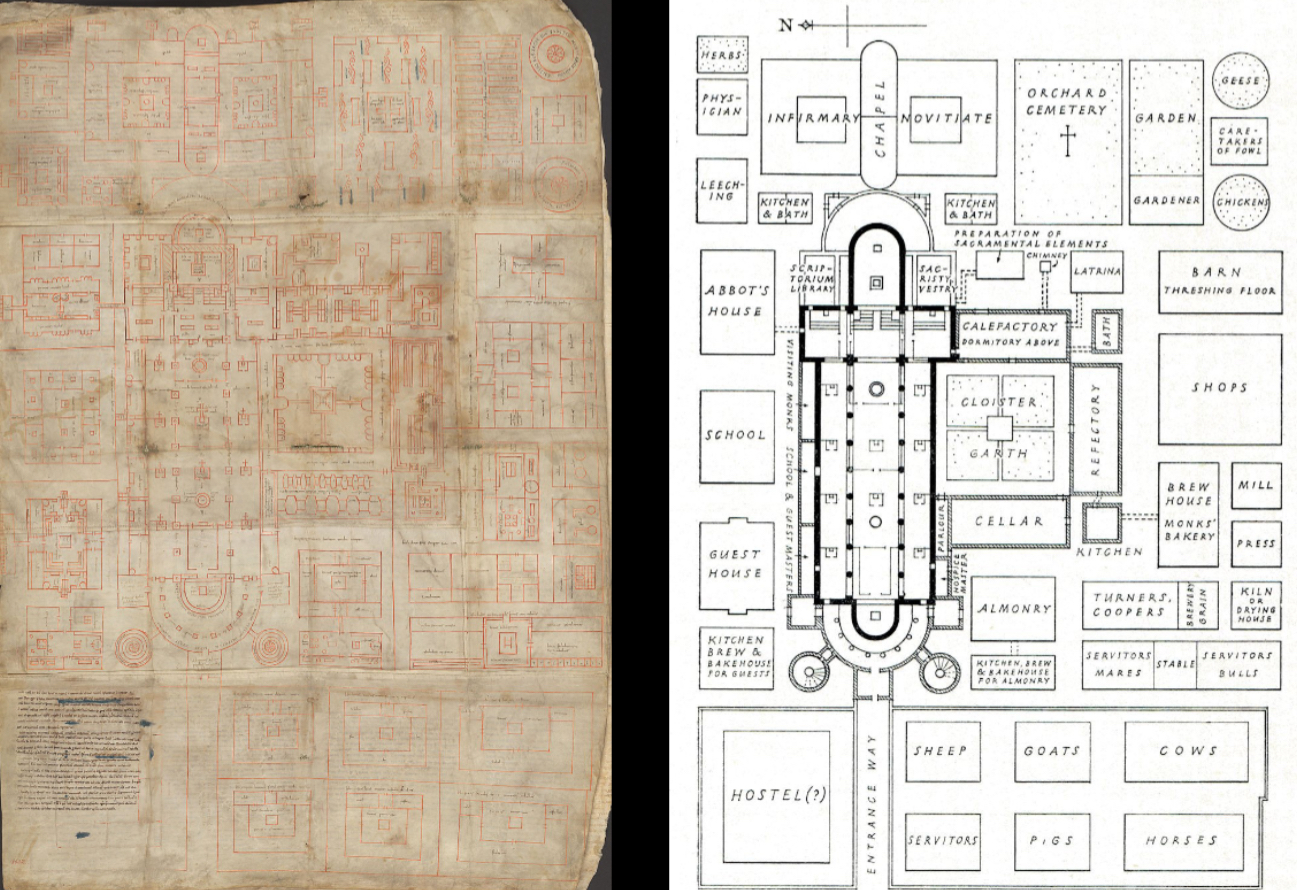
Plan for an Ideal Benedictine Monastery Complex
Artist unknown, 820s,
Pen and ink on parchment
Idealized plan for a monastery
No evidence that the plan was followed through
Thinking rationally about where things go
Everything surrounding church
Self-sufficient, to be isolated from the city
Sense of frugality
Monks do not take care of everything
The counts do all the individual landwork
Reflects the monastic reform movements under Benedictine rule
Structuring of monastic life around cloisters, church, dormitory, and refectory
shows the ideal of a self-contained monastic community and its spatial organization
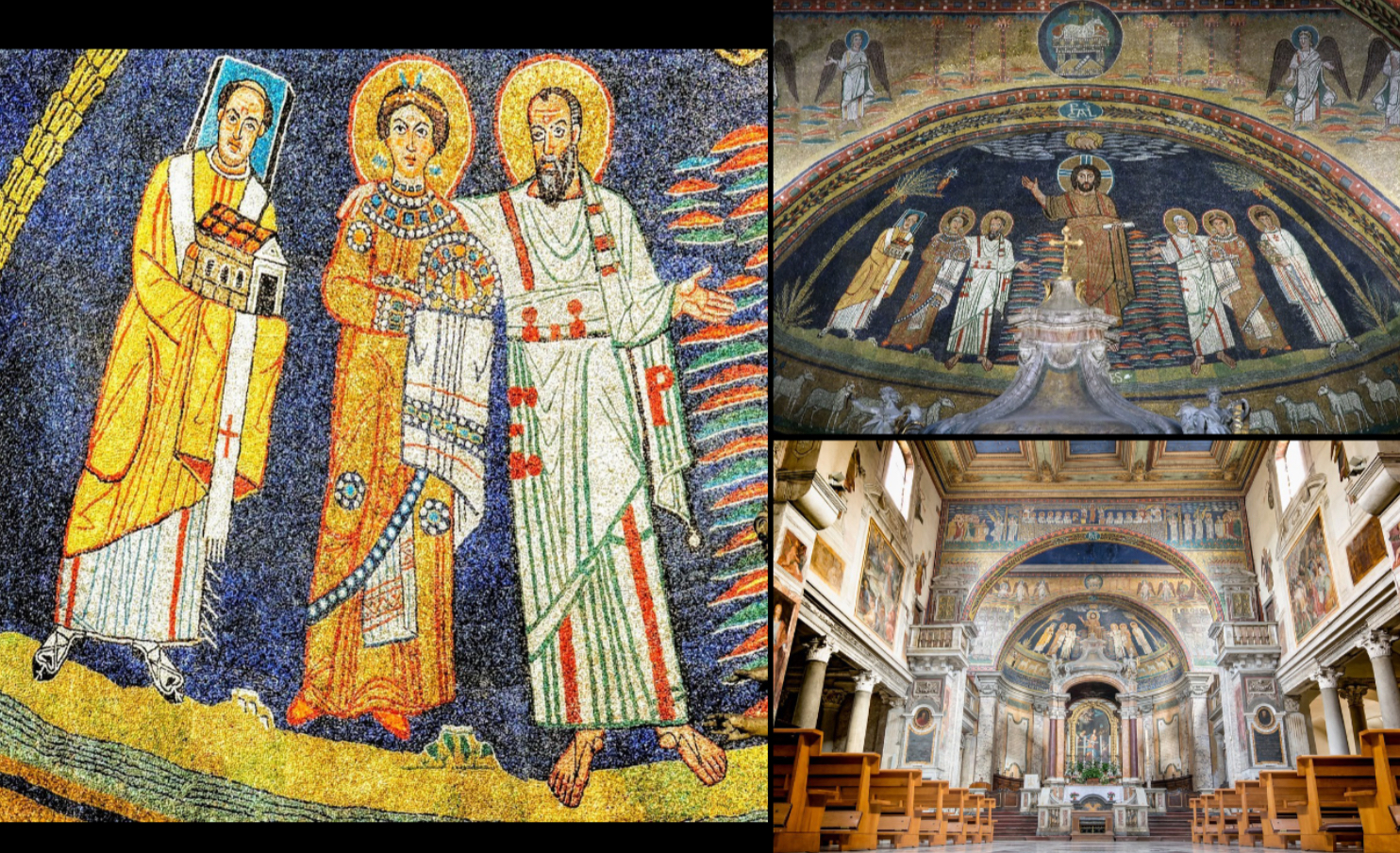
Apse Mosaic (Saints Praxedes and Pudentiana Presented to Christ by Saints Peter and Paul, with Pope Paschal and a Priest Saint [Zeno?])
Artists unknown, 822,
Polychrome gold and glass mosaic tiles
Preserves a large portion of the OG mosaics from the 9th century
The entire church was renovated and rebuilt
Pope Paschal has a square halo cause “he’s not dead”
Contemporary element of art
These saints are not martyrs
Killed for attending the burials of martyrs, which violates Roman law
Second-wave of iconoclasm
Probably made by Byzantine artists who were exiled/unemployed during a time when not large amounts of religious art were being commissioned
Expresses the papacy’s role, the veneration of local saints (Praxedes & Pudentiana)
Bridging of early Christian Rome with the Carolingian revival
Shows the visual authority of the Pope and the continuity of Christian cult sites